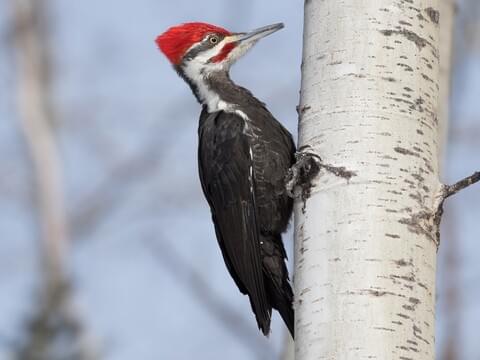Coming Across Woodpeckers in Florida Types: Habitats and Habits
Coming Across Woodpeckers in Florida Types: Habitats and Habits
Blog Article
Unveiling the Secrets of Woodpeckers: Behavior, Environment, and A Lot More
Woodpeckers, with their one-of-a-kind actions and specialized adjustments, have long captivated scientists and nature enthusiasts alike. By revealing the enigmas bordering woodpeckers' habits and habitat choices, a deeper understanding of these bird marvels emerges, offering a glimpse right into their interesting world.
Woodpecker Behavior Insights
In examining woodpecker actions, a remarkable screen of specialized skills and adjustments arises, clarifying their amazing ecological particular niche - Woodpeckers in Florida. Woodpeckers, understood for their distinctive drumming on trees, have a range of behavioral attributes that add to their survival and success in their environment. One vital habits is their drumming, which serves numerous functions such as communication, developing territory, bring in companions, and locating food resources. This rhythmic pecking additionally showcases their exceptional strength and endurance, as they can hammer away continually at broadband without causing damage to themselves.
Moreover, woodpeckers exhibit a special feeding actions defined by their ability to essence bugs from tree bark using their specialized beaks. Their long, barbed tongues help in capturing victim, while their solid neck muscles supply security and precision throughout pecking activities. This feeding technique enables woodpeckers to accessibility covert insect larvae and remove them with impressive efficiency.
Environment Preferences and Option
What variables affect the environment preferences and option of woodpeckers? One vital factor influencing woodpecker habitat option is the accessibility of appropriate nesting sites. Woodpeckers usually choose woodlands with a mix of mature trees that offer sufficient opportunities for cavity excavation.
In addition, woodpeckers reveal a preference for habitats with an abundant supply of food resources. They are mostly insectivorous, eating beetles, ants, larvae, and other insects located in rotting wood or tree bark. Woodpeckers often tend to prefer wooded locations with a diverse insect population to satisfy their dietary demands.
Additionally, the presence of dead or worn out trees is one more key consider woodpecker environment selection. These trees not just offer food resources however also use suitable substratum for tooth cavity excavation. Dead trees are essential for the upkeep of healthy woodpecker populaces, as they play a vital duty in the woodpeckers' life cycle and ecological community dynamics.
Feeding Behaviors and Diet Plan Make-up
Woodpeckers demonstrate a specialized feeding actions concentrated on foraging for insects within different environments. In enhancement next to insects, woodpeckers also take in tree sap, fruits, nuts, and seeds, including selection to their diet depending on the season and accessibility of food resources.
The why not find out more foraging techniques of woodpeckers are well-adapted to their arboreal way of living. Woodpeckers play a critical duty in preserving the health and wellness of forests by regulating insect populaces and helping in the decomposition of timber.
Drumming Appears and Communication
Utilizing quick drumming noises on various surfaces, woodpeckers utilize an unique form of interaction to indicate region borders and attract friends. This drumming actions is not only a means of interaction yet additionally functions as a means for woodpeckers to establish their existence within a specific area. The strength, speed, and pattern of the drumming can convey essential info to various other woodpeckers around.
Woodpeckers utilize drumming audios to introduce their existence in a region and to advise off possible intruders. The loud and recurring nature of the drumming functions as a clear signal to other woodpeckers that the location is already claimed. This assists in decreasing conflicts and minimizing physical confrontations in between people.

Survival Adaptations and Specialized Makeup

Verdict
To conclude, woodpeckers show special habits, such as drumming audios for interaction, and have specialized anatomy for survival in their chosen habitats. Their feeding behaviors and diet regimen composition further show their adaptability to numerous atmospheres. By understanding these elements of woodpeckers, scientists and conservationists can better secure and maintain these interesting birds and their ecosystems.
Report this page